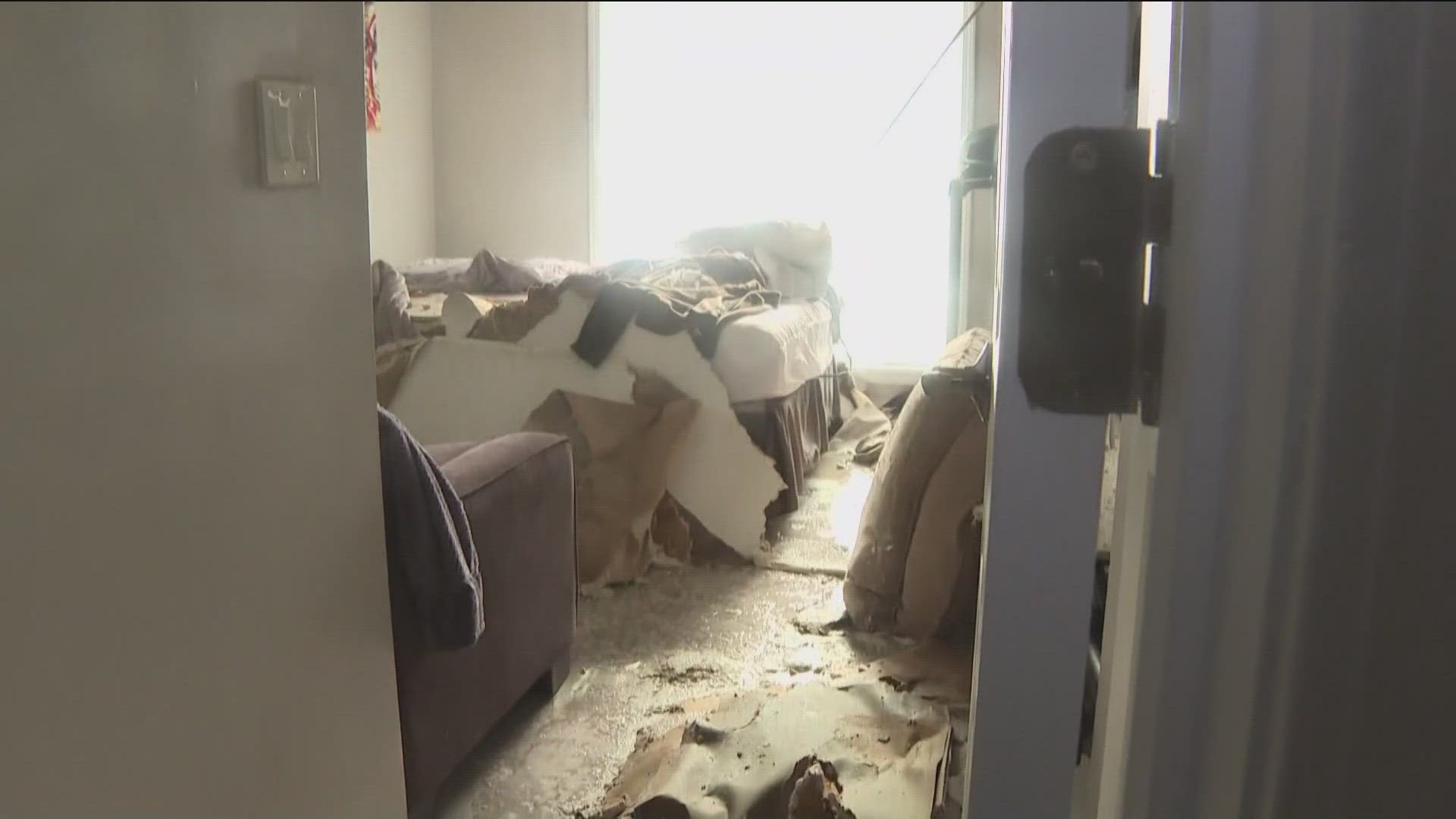ATLANTA — Frozen pipes are a real worry when frigid temperatures strike, and a burst pipe can cost time and money, with a local insurance agent emphasizing the need for prevention above all else.
"What we see almost with every single frozen pipe claim is what you have are uninsulated pipes," Robert Sherrell with Ironwood Insurance said. "They're in different portions of your house or different portions of an apartment, and they were not insulated properly properly to begin with."
Pipes that frequently freeze include outdoor hose bibs, swimming pool supply lines and sprinkler lines, according to the Red Cross. Pipes in areas like basements and crawl spaces, attics, garages or kitchen cabinets can also be vulnerable.
While there are multiple ways to bolster your home ahead of the cold, burst pipes can still happen, and experts said you need to move fast if it happens to you.
"Know where your water shut off is at all times,'' Sherrell said. "Because if that pipe does burst, you've got to be able to shut that water off. The more it runs, the more damage is going to be done."
Once the water is off, Sherrell recommends documenting any damage and cleaning up what you can.
"A lot of people are concerned, 'Oh well, the insurance company, if I start doing anything, may not cover this.' But if you're able to speed up the process, get the water out quicker," he said. "That's better for the insurance company as well."
According to Sherrell, most broad insurance policies for homes and renters cover personal property damage from burst pipes. Renter's insurance, he said, is especially recommended given the close living quarters and potential liability.
"That's going to not only protect your belongings, but if for some reasons there were a liability claim because of something you did wrong," Sherrell said. "Then you get protection from that if you damage somebody else's property."
Some signs can tip you off a pipe that may be frozen. According to the Red Cross, if you turn on the faucet and there's only a trickle of water, you can suspect a frozen pipe can be to blame. The organization recommends the following process for thawing frozen pipes safely:
- Keep the faucet open. As you treat the frozen pipe and the frozen area begins to melt, water will start to flow through the frozen area. Running water through the pipe will help melt ice in the pipe.
- Apply heat to the section of the pipe using an electric heating pad wrapped around the pipe, an electric hair dryer, a portable space heater (kept away from flammable materials), or wrapping pipes with towels soaked in hot water. Do not use a blowtorch, kerosene or propane heater, charcoal stove, or other open flame device.
- Apply heat until full water pressure is restored. If you cannot locate the frozen area, if the frozen area is not accessible, or if you can not thaw the pipe, call a licensed plumber.
- Check all other faucets in your home to find out if you have additional frozen pipes. If one pipe freezes, others may freeze, too.
.

